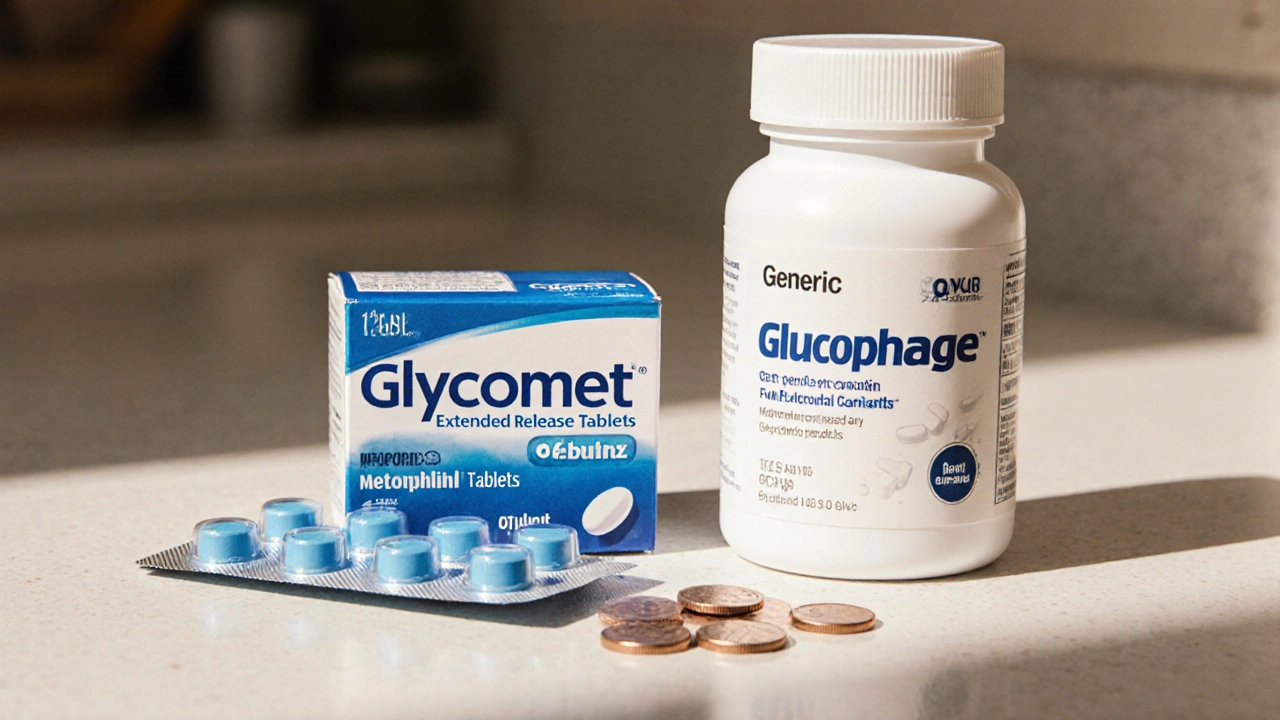Glycomet: What It Is, How It Works, and What You Need to Know
When you're managing Glycomet, a brand name for the diabetes medication metformin, commonly prescribed to lower blood sugar in type 2 diabetes. Also known as metformin, it's one of the most widely used drugs for diabetes worldwide—not because it's flashy, but because it works, is affordable, and has decades of real-world use behind it. If you've been prescribed Glycomet, you're not alone. Millions take it daily to keep their blood sugar steady, avoid complications, and feel more in control of their health.
It doesn’t work like insulin. Instead, metformin, the active ingredient in Glycomet, reduces glucose production in the liver and helps your body use insulin more effectively. That means less sugar floating around in your blood, fewer spikes after meals, and lower HbA1c levels over time. Unlike some other diabetes drugs, it rarely causes weight gain—and in many cases, people actually lose a little. It also doesn’t trigger low blood sugar on its own, which is a big plus for people worried about sudden crashes.
But it’s not perfect. Some people get stomach upset—nausea, diarrhea, or bloating—especially when they start. That usually gets better after a few weeks. Taking it with food helps. There’s also a rare but serious risk of lactic acidosis, mostly in people with kidney problems or severe dehydration. That’s why doctors check your kidney function before and during treatment. If you’re on Glycomet, don’t skip those blood tests.
People often ask how Glycomet compares to other diabetes meds. It’s not the only option, but it’s usually the first one doctors reach for. Unlike sulfonylureas, it doesn’t force your pancreas to pump out more insulin. Unlike GLP-1 agonists or SGLT2 inhibitors, it’s cheap and comes in generic form. And unlike insulin, you don’t need injections. That’s why it’s the go-to for early-stage type 2 diabetes. But if your blood sugar stays high after months on Glycomet, your doctor might add another drug—like a DPP-4 inhibitor or a GLP-1 medication—to boost results.
It’s not just about pills. Glycomet works best when paired with lifestyle changes. Cutting back on sugar, walking after meals, and losing even a few pounds can make the drug work better. Some people even get their blood sugar into the normal range without other meds—just by combining Glycomet with diet and movement.
What you’ll find in the posts below are real, practical stories and comparisons from people who’ve used Glycomet and similar drugs. You’ll see how it stacks up against other diabetes treatments, what side effects people actually experience, and how to manage them. You’ll also find tips on timing doses, what to do if you miss a pill, and how to talk to your doctor about switching or adding meds. No fluff. Just what works—and what doesn’t—for real people managing type 2 diabetes every day.
Glycomet (Metformin) vs Alternative Diabetes Drugs: Full Comparison
A detailed comparison of Glycomet (metformin) with generic metformin and newer diabetes drugs, covering efficacy, cost, side effects, and how to choose the right option.
